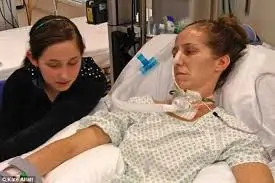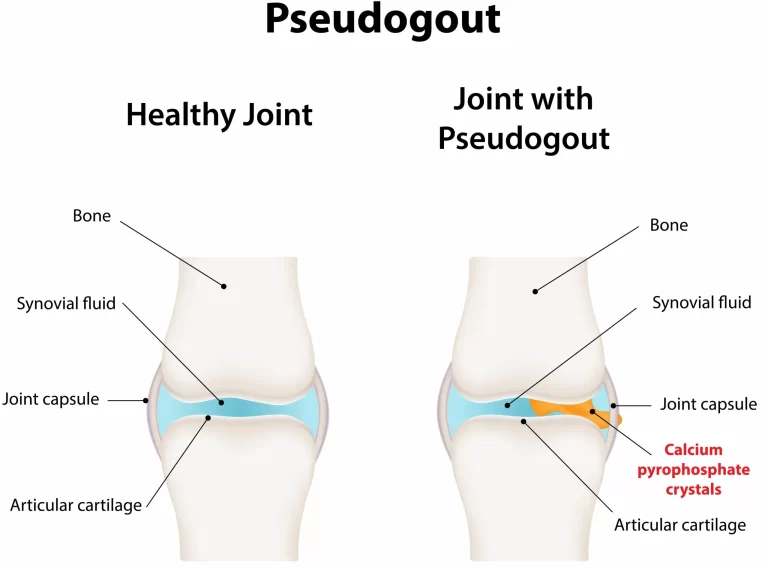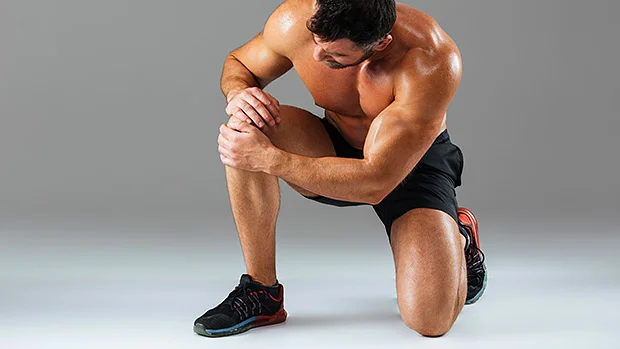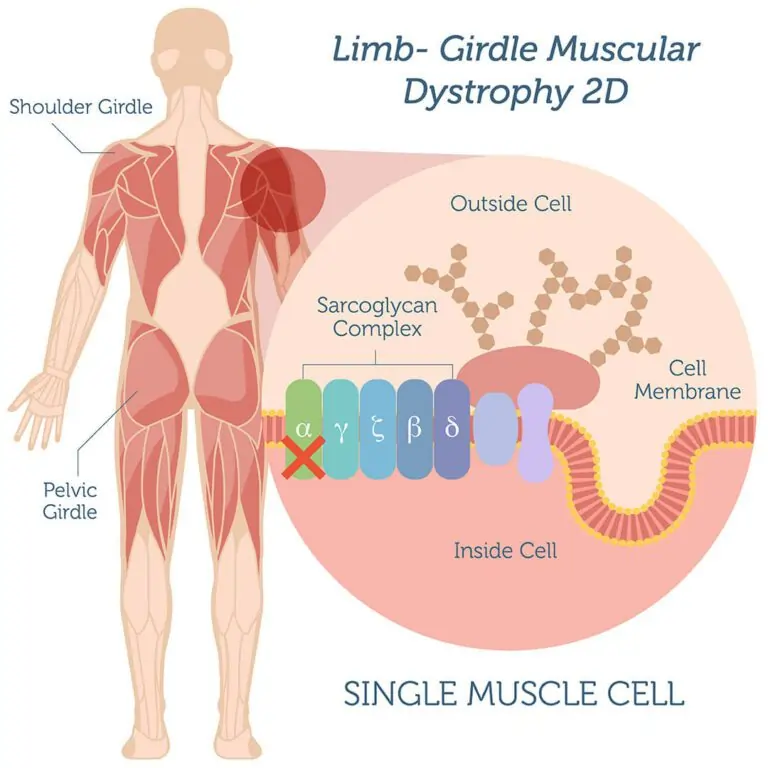Locked-in Syndrome: Cause, Symptoms, Diagnosis, Treatment
Locked-in syndrome is a rare neurological disorder where patient is in pseudocoma position in which complete paralysis of voluntary muscles, However the eyes movement like blinking are present. In this condition patient is conscious and can think and reason, but are unable to move their body parts or speak. Vertical eye movements and blinking can be used to express.
There are too many reason for it, few most common causes are a hemorrhage stroke where brain stem damage, traumatic brain injury, tumors, Poisoning cases, diseases of the circulatory system, diseases that damage the myelin sheath surrounding nerve cells (multiple sclerosis), infection, or medication side effects mainly overdose.
In severe cases there may be Total locked-in syndrome, or completely locked-in state (CLIS), wherein the eyes movement also lost (paralyzed).
It is first described by Fred Plum and Jerome B. Posner in 1966.
Symptomatic medical treatment with other supportive measures such as breathing and feeding is important. Physiotherapy treatment for paralysis with proper nursing care, proper nutritional support, and early preventive measure of systemic complications such as respiratory infections are the main part of treatment.
Partial to full recovery depends upon cause, area of damage and severity. Speech therapy is also help for restoration of speech. Advance electronic communication devices such as patient-computer interfaces such as infrared eye movement sensors and computer voice prosthetic are used to improve communication. Remote wheelchairs have also helps to reduce dependence.
Table of Contents
Sign and Symptoms of Locked-in syndrome:
Following are the most common symptoms are seen in this condition, these are
- quadriplegia or tetraplegia (loss of all four limb movement control)
- unable to speak
- patient is conscious and aware of surrounding, with no loss of cognitive function
- proprioception and sensation may be present or absent
- few facial movement are present or sometimes complete facial palsy
- loss of Bowl/bladder control
- Double vision (diplopia)
- Cerebral palsy
- Abnormal behaviors
- Eye movement mainly vertical or lateral through which communication is possible.
Causes:
In Locked-in syndrome where upper portion of the brain is normal while lower portion of the brain and brainstem is damage which is opposite to coma, where upper portion of the brain is damaged and lower portion of the brain is normal.
Following are the few most common cause :
- Ischemic or hemorrhage stroke in which brainstem is damaged
- the circulatory system related diseases
- krait bite and other neurotoxic venoms related Poisoning cases where they cannot usually cross the blood–brain barrier
- Medicine side effects (overdose)
- Damage to nerve cells, mainly of the myelin sheath that surrounding nerve cells, caused by disease or osmotic demyelination syndrome eg. multiple sclerosis
- the basilar artery related hemorrhagic stroke
- Traumatic Head-brain injury
- The brain-stem related disease or injury
Differential Diagnosis:
- Amyotrophic lateral sclerosis (ALS)
- Bilateral brainstem tumors
- Brain death (of the whole brain or the brain stem or other part)
- Coma (deep or irreversible)
- Guillain–Barré syndrome (GBS)
- Myasthenia gravis (MS)
- Poliomyelitis
- Polyneuritis
- Vegetative state (chronic or otherwise)
- Curare poisoning
Diagnosis:
LIS Diagnosis is mostly difficult to diagnose, takes time, sometimes diagnosed possible when a family member or support staff informed that they have observe a sign from the patient that the individual is aware and blinking to say yes or no.
It is affected mainly brainstem area, so neurological examination and MRI / CT scan are also helpful. Patient uses Eye blinking for communication is aslo a classic symptoms through which LIS Diagnosed.
Testing vertical eye movement with your finger is also helpful, if you suspect LIS, you can reffered to neurophysician consultation.
An EEG study can also help to the observe the sleep-wake patterns shows that the patient is not unconscious but simply unable to move.
Medical Treatment:
Symptomatic medical treatment with other supportive measures such as breathing and feeding is important. Physiotherapy treatment for paralysis with proper nursing care, proper nutritional support, and early preventive measure of systemic complications such as respiratory infections are the main part of treatment.
Partial to full recovery depends upon cause, area of damage and severity. Speech therapy is also help for restoration of speech. Advance electronic communication devices such as patient-computer interfaces such as infrared eye movement sensors and computer voice prosthetics are used to improve communication. Remote wheelchairs have also helps to reduce dependence.
Multidispeciality team of doctors for rehabilitative treatment in the early stages gradually improved the overall health of the patients and reduced the mortality rate.
Multispeciality team of Doctors are:
- Neurophysicians
- Physicians
- Nurses that helps with bowel and bladder function, regular interval re-positioning, respiratory training, administration of medication, and in just about all other aspects of care.
- Speech therapists: helps to improve speech, swallowing techniques, communication strategies with eye movements or more advanced assistive devices, trained for proper breathing techniques
- Occupational therapists: helps to the use of assistive devices, modification of activity of daily livings, helps to make communication strategies
- Psychologists: motivation with preparing patients for their new reality and environment
- Physical therapy to improve mobility
Physical therapy treatment:
Physical therapy treatment play important role for patients with LIS, started as soon as possible after diagnosis. However old theory that with LIS will not improve and/or frustrations as a result of gradual progress means that not all patients receive rehabilitation services or adequate therapy.
Latest studies show that Locked-In Syndrome patients who receive early quality therapy and ongoing therapy (5-6 times per week) have showed gradual improved function and reduced mortality and that the severity of LIS and is also worsen when treatment is discontinued.
Locked-In Syndrome patients can have variety of symptoms and recovery period is also vary. So Physical therapy treatment are mostly symptomatic and according to assessment of the patient. Each patient have different type of symptoms and cause and accordingly treatment plan are carried out.
Early rehabilitation is prime goal of treatment, to make patient independent as early as possible. So treatment plan also focus on patient goals and life choices which often emphasize movements that may allow for improved communication and independence.
Physical therapy in early stages :
Primary Goal of treatment :
- Regular re-positioning
- Maintain range of motion
- Chest Physiotherapy
The multispeciality team of Doctors with Symptomatic medical treatment with other supportive measures such as breathing and feeding is important. Physiotherapy treatment for paralysis with proper nursing care, proper nutritional support, and early preventive measure of systemic complications such as respiratory infections are the main part of treatment.
Regular re-positioning: Change the the position of the patient at regular intervals will help to reduce complication seen mainly in long bed ridden patient, This will help to improve postural drainage, the reduce edema, the prevention of bedsores, helping to avoid of bronchial secretions, and improve overall comfort of the patient and the reduce the risk of other associated complications.
Maintain Range of motion: The patient is complete bed-ridden have risk of muscle tightness and joint stiffness, relax passive movement of all four limb with neck and trunk helps to avoid joint stiffness and muscle tightness, contractures. This will also helps to reduce or maintain spasticity of muscles.
Chest Physiotherapy: Regular chest physiotherapy helps to remove cough in the lung due to bed-ridden of the patient. Physiotherapist have positioning skills for postural drainage, using suctioning machine to reduce secretions and prevent lung related complications, doing chest physiotherapy to assist with respiration and drainage of secretions.
In progress Physical therapy:
Goal of treatment
- Improve motor control
- Reduce spasticity
- Improve sitting and standing Balance
- Sensory integration training
- Chest Physiotherapy if required
- Maintain range of motion (ROM)
- Task-oriented training
- Muscle strengthening and endurance training
- Gait training
Improve motor control : Gradual passive movement to active assisted exercise and then progress to active exercise depends upon motor examination and control of movement as patient improve. Regular strengthening of ocular muscles as this is very important for communication.
Reduce spasticity is also important these helps to prevent deformities and muscle tightness. Regular stretching exercise and positioning helps to minimise the spasticity. Splint is also required in severe case of spasticity.
Regular Chest Physical therapy to reduce chest complication.
Improve sitting and standing Balance : To improve Balance of Neck and trunk, regular Balance positioning exercise helps to gradual improvement of Neck and trunk.
Sensory integration training : In which specific sensory training session to help a patient respond to light, sound, touch, smells, and other input.
Maintain range of motion (ROM) of all four limb are required -helps to reduce joint stiffness and muscle tightness.
Task-oriented training session according patient goals as a guide, repetitive task-oriented training session helps to improve long-term motor control which may result in useful everyday activity, eg. pushing a button or steering an electric wheelchair.
Gait training is the last part of treatment and started as patient regain standing balance. Use of supportive device like stick, walker to improve gait and make patient independent as early as possible is the ultimate goal of treatment.
Prognosis :
It is highly difficult to regain for any significant motor function to return. The majority of patients not able recover motor control. However, few people with the condition able to gain full control and to live much longer,which is seen in exceptional cases, like that of Kerry Pink, Gareth Shepherd, Jacob Haendel and Kate Allatt a mostly get full recovery may be achieved, with intensive physical therapy treatment with supportive medical and other related therapy.
Latest Research:
New brain–computer interfaces (BCIs) can help to patient of LIS patient to answer yes-or-no questions.
Researchers created and successfully tested a neural interface which allowed someone with locked-in syndrome to operate a web browser in 2006.
Scientists have also showed that they have developed a technique that allows patients to communicate via sniffing.






